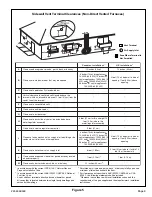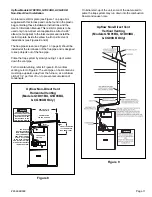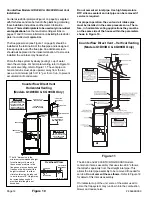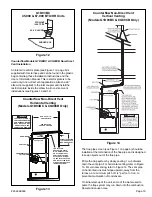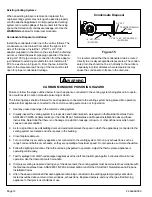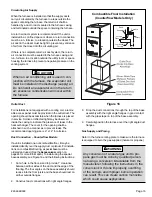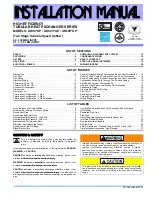
# 45466K003
Page 23
It is recommended that this furnace be inspected by a
qualified service technician at the beginning of each
heating season.
Filters
Filters should be checked at least every 6 weeks. Dispos-
able filters should be replaced when dirty, and cleanable
filters should be cleaned regularly. It is important to keep the
air filters clean, as dirty filters can restrict airflow and the
blower and induced draft motors depend upon sufficient air
flowing across and through them to keep from overheating.
Lubrication
The blower motor and induced draft motor are pre-lubricated
by the manufacturer and do not require further lubricating
attention. However, the motors should be cleaned periodi-
cally to prevent the possibility of overheating due to an
accumulation of dust and dirt on the windings or on the
motor exterior.
Condensate Collection and Disposal System
Check the condensate drain line periodically for blockage.
Visual inspection of condensate flow can be done easily
while the furnace is in operation. Use a flashlight to
illuminate the discharge end of the condensate drain that
is placed in the sewer opening. If the condensate drain
line becomes blocked or plugged, the furnace will not
operate properly.
MAINTENANCE
Failure to follow the safety warnings exactly
could result in dangerous operation, serious
injury, death, or property damage.
Improper servicing could result in dangerous
operation, serious injury, death, or property
damage.
•
Before servicing, disconnect all electrical
power to furnace.
•
When servicing controls, label all wires prior
to disconnecting. Reconnect wires correctly.
•
Verify proper operation after servicing.
WARNING
ELECTRICAL SHOCK, FIRE,
OR EXPLOSION HAZARD
Main Burners
Light the burners and allow to operate for a few minutes to
establish normal burning conditions. Observe the main
burner flames. Compare this observation to Figure 21 to
determine if proper flame adjustment is present. Flame
should be predominantly blue in color and strong in appear-
ance. Check that all burners are lit, and that the flame does
not impinge on the sides of the heat exchanger.
Distorted flame or yellow tipping of the natural gas main
burner flame, or long yellow tips on propane, may be
caused by lint accumulation or dirt inside the burner or
burner ports, at the air inlet between the burner and
manifold pipe, or obstructions over the main burner orifice.
Use a soft brush or vacuum to clean the affected areas.
Typical Flame Appearance
(Main Burners)
Figure 21
Heat
Exchanger
Burner
Flame
(Blue Only)
Burner
Gas
Manifold

